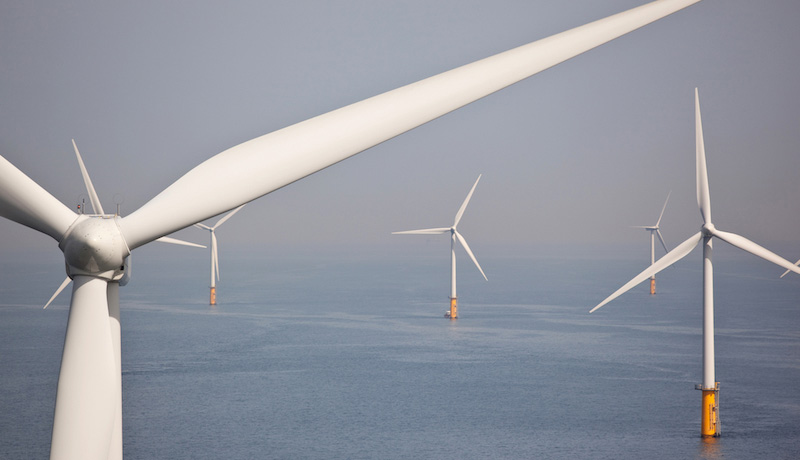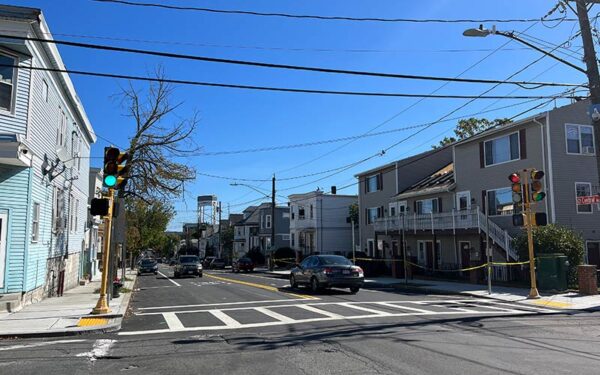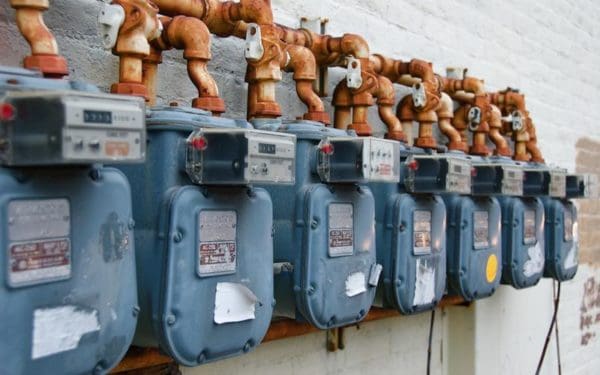
Offshore wind farm. Photo Credit: Shutterstock.
The regional grid operator ISO-New England‘s long-awaited Operational Fuel-Security Analysis shows that more renewables, not more gas, will keep New England’s electric power system reliable – especially during winter cold-snaps. That supports what CLF, and the markets, have been saying now for several years – New England doesn’t need more gas-fired power plants or expensive pipelines to keep the lights on and our homes warm on the coldest winter nights.
Now, if you’ve been reading the news lately, you may be scratching your head, as ISO-New England CEO, Gordon Van Welie, has been suggesting just the opposite to a lot of reporters. But the fact is, he’s misinterpreting his organization’s own data. Together with the Massachusetts Attorney General’s Office, and others, we’ve looked at the study in detail and found a serious flaw in ISO’s analysis. Fans of big pipelines are using that flaw to tout a tired story aimed at lining the pockets of Big Gas. And until that flaw is corrected, we should all question any public statements ISO-New England makes about our “fuel security,” especially when it comes to natural gas.
Why Are We Talking About Fuel Security?
New England has been growing overly dependent on natural gas for meeting electricity needs, which has the grid operator (ISO) concerned. It’s worried that, during deep and sustained winter cold snaps, New England may not have enough gas on hand to both heat and power our homes and businesses.
That’s because many gas-fired electricity generators buy most of their fuel, most of the time, from our region’s large interstate gas pipelines. But those pipelines were not originally built to serve power plants. Instead, they were designed to provide gas for heating and other building services. For most of the year, the region has plenty of gas available to meet our heating and electricity needs, plus (lots of) extra to spare. Not surprisingly, during particularly cold winter periods when our furnaces are running around the clock, there is less “extra” gas in the system, and the price for gas – for all users – rises.
After seeing short-term winter price spikes first in 2004, and then again during the polar vortex of 2013-14, economists at ISO started to wonder out loud whether the regional demand for gas might be outstripping our pipeline supply. So about a year ago, ISO decided to study the issue more closely and coined a new term for it: “fuel security.”
The Report Is Confusing Unless You Look Closely
So what does ISO conclude about New England’s “fuel security”? Its analysis proves what CLF and others (like the Massachusetts Attorney General in 2015) have been saying for years: we don’t need a new pipeline. On top of that, it shows that solar and wind power are not only cheaper and cleaner than gas, they also make our grid more resilient to even the coldest winters!
Admittedly, that might not be the message you get if you only skim the study or listen to van Welie in the press. Because, despite the report’s actual conclusions, the study reads like it was written by folks who (like van Welie) have advocated for years on behalf of pipeline companies. That explains why those who haven’t taken a closer look at the study – or who are trying to profit from it – may interpret the report as a dire warning that if we don’t do something fast (like build a big new gas pipeline into and across New England), we’re in trouble.
We’re not in trouble though. Not at all. Here’s why.
The “Dire” Predictions Hinge on Unrealistic Scenarios
The report looks at more than 20 different scenarios in an attempt to determine our level of risk for power outages due to fuel shortages. ISO starts with a baseline “reference case” scenario that is supposed to reflect a best guess for what our electricity system will look by the mid-2020s, assuming current trends – like the steady uptick in renewable energy sources – stay on track. From there, it modeled the report’s other scenarios by changing individual factors in that baseline – for example, an unexpected number of generators retire, or more renewable sources come online faster than expected.
But if you dig into the numbers a bit – like we did with a team of other interested groups, including the state consumer advocates for Massachusetts and New Hampshire – it’s easy to see that ISO’s overall results were skewed by some major errors in the reference case it chose to serve as the baseline for its analysis.
Instead of the baseline reflecting system conditions that, by the mid-2020’s “can reasonably be expected to materialize in New England given current trends,” it presents a scenario that doesn’t even reflect our actual energy mix today. In its place, it assumes much more of the “bad stuff,” like gas-fired power, and far less of the “good stuff,” like renewables and energy efficiency. And those assumptions simply aren’t realistic, given both our present reality and current and future trends in New England.
For example, despite strong, ever-increasing state renewable energy mandates, ISO included in its baseline fewer clean energy sources than are online today. This means they also included far less than the minimum 8,000MW of clean electricity we’ll have online by the mid-2020s (as required by state law). Similarly, it included less liquefied natural gas (LNG) and pipeline capacity by mid-decade than is currently available. It also built less energy efficiency into the years 2024-25 than the estimate ISO currently uses for grid planning today. (For a full list of ISO’s baseline errors, you can read the comments we filed together with other interested grid-watchers.)
Gas Is the Problem; Renewables Are the Solution
That’s not to say that we should throw out all of ISO’s analysis, however. At least one of their proposed scenarios does present a fairly realistic picture of what the “fuel security” issue will look like going forward. ISO calls it the “High Boundary” scenario, which includes, for the 2024-25 time frame, the right amount of energy from renewables, the right supply of LNG capacity, and the right amount of imported energy, as well as an extra “tank refill” for oil-fired plants, which is easy to do and would only be required during the coldest of cold winters.
Importantly, in this scenario – the one that most closely reflects what our grid will look like in the mid-2020s – ISO’s study indicates that it would never need to implement even cautionary measures, known as “OP-4” warning actions. There would also be zero hours where reserve generators are called upon to maintain reliability, even during an unusually long and cold winter. And all of this means, according to ISO’s own analysis, that there is essentially zero chance of “fuel security”-related rolling blackouts in the future if we continue along the transition-to-renewables path we’re already on.
ISO Needs to Correct Its Mistake or Else Risk Public Trust
So while we applaud ISO for diving deeper into the issue, we frankly shouldn’t trust its public conclusions or statements about “fuel security” unless and until it corrects the flawed baseline for its study. The numbers are critically important here, and the stakes are too high. Burning more gas is a dead end – for our electric power system, for our climate, and for the health and welfare of businesses and families across Massachusetts.



